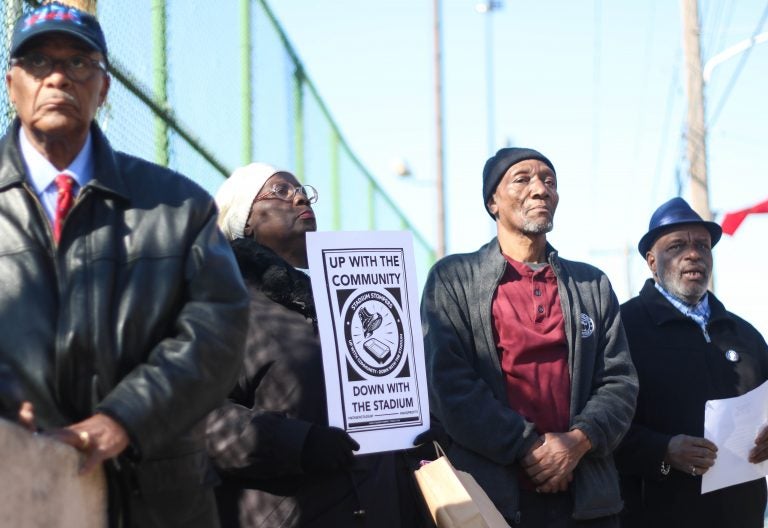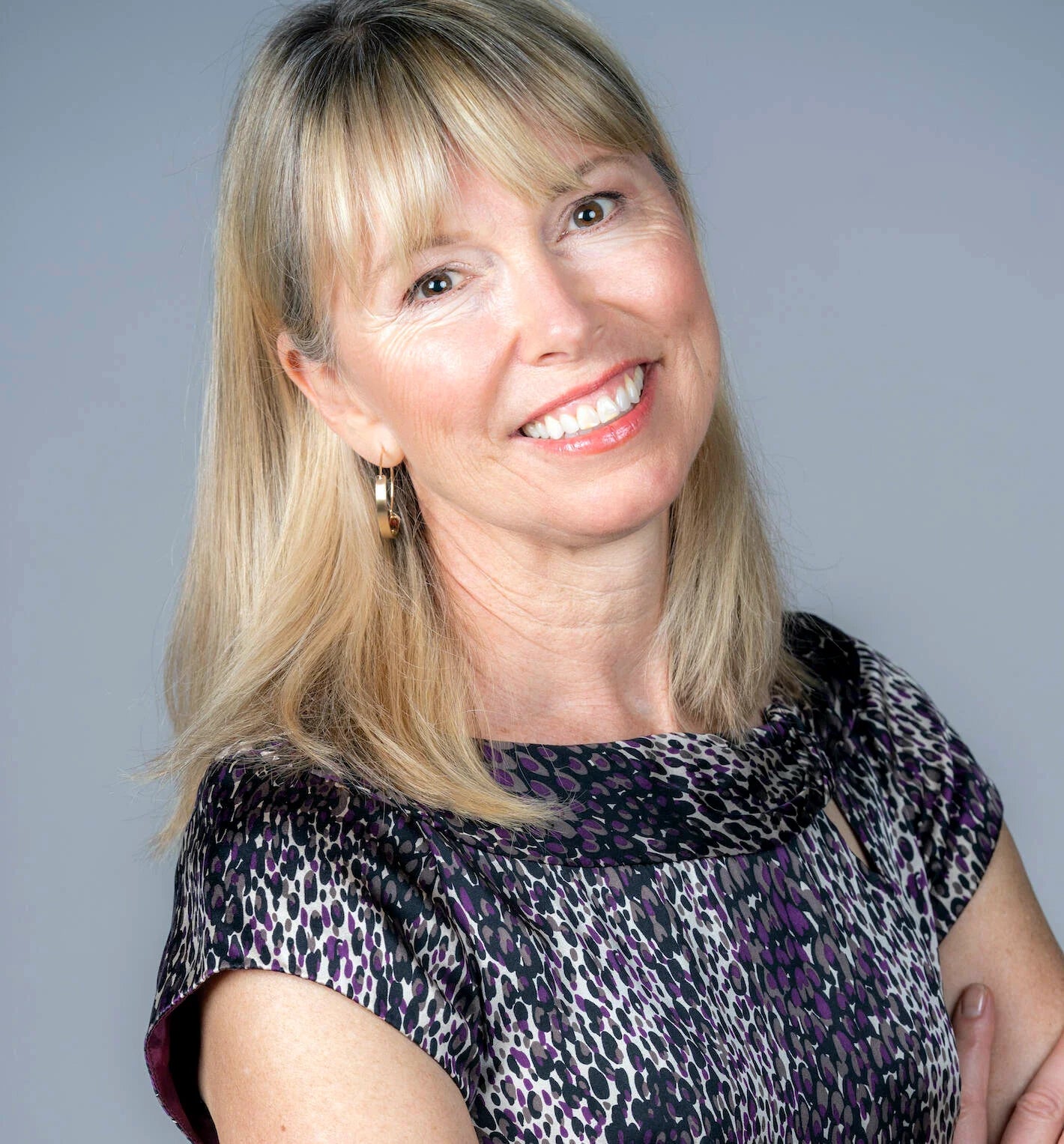Could Temple stadium plan be reworked to benefit community?
Wharton professor emeritus talks about how new stadiums can work smartly to manage growth in underserved communities.
Listen 6:04
Residents protest against the planned Temple University stadium during a rally this week. (Angela Gervasi/for WHYY)
Nearly two months after Temple University announced it was moving forward with its plans to build a $130 million, 30,000-seat football stadium on its North Philadelphia campus, school officials and community opponents are holding town hall meetings.
Activists known as the Stadium Stompers are hosting a meeting Thursday night, while Temple has set a town hall for Tuesday.
A new stadium would spare Temple from paying millions to rent Lincoln Financial Field, where the Owls currently play. However, activists say the new facility would limit parking for residents; create a noise and sanitation nightmare; and give very little back to an underserved neighborhood.
Wharton professor emeritus Kenneth Shropshire has heard these arguments before. He’s CEO of Global Sport Institute at Arizona State University and author of “The Sports Franchise Game: Cities in Pursuit of Sports Franchises, Events, Stadiums and Arenas.”
Morning Edition host Jennifer Lynn spoke with him about how new stadiums can work smartly to manage growth in underserved communities.
What’s an example where this has worked well?
A primary example, one that I think about every day as I see the construction, is Sun Devil 365 down here in Tempe, Arizona. The name 365 means we want to use the facility 365 days a year — not just for eight, nine, 10 football games — but to allow the community to come in, enjoy events, to have meeting places. There aren’t a whole lot of examples. This is something that’s talked about a lot, but rarely is it done.
But you can probably put your fingers on some efforts to be more cooperative with the neighborhood, spur some growth in these underserved communities?
For sure, you hear people talk about having a museum, having day care facilities, having educational opportunities, having business opportunities in terms of vending and the like. Even there in Philly, I was fortunate enough to lead the mayor’s committee, trying to figure out where to put, way back when, the new football and baseball stadiums, the Lincoln [Financial Field] and Citizens Bank Park. And legendary Tug McGraw came into my office and suggested that we do a lot of these things, and it was so novel at the time that nobody really moved on it, or thought how could you do that. But think about how even those big facilities within Philadelphia are not used on a regular basis. Is there a way to step back and think about how we could do something different?
In the case of Temple University’s stadium, how could it be a bridge between the school and the surrounding neighborhood?
Oddly enough, this “Black Panther” movie, where you do have to step back and think differently … what if there was an opportunity to start over again, and you put this piece of real estate in a community? What is it that the community wants? To start backwards, almost forget about the idea of having football and soccer and that sort of thing. What can you do? Is there a need for a quality day care facility? Is there a museum that could be established there? Are there community meeting spaces needed? Are there educational opportunities that could be provided? Teaching kids in that community specifically about sport is great, but here’s a place you can come and learn that there’s more to sport than playing, you can actually be involved the business side of sport. There’s a lot that could be considered, I’m sure things that I’m not even thinking about.
Well let’s turn to to Detroit, where the [NBA] Pistons made the move to go back downtown, and they paid millions of dollars to provide job training to the community and build neighborhood basketball facilities. Now it wasn’t a perfect world, the business side of things can slip. For instance, they were fined for not meeting their pledge to hire enough locals to build their complex. But this is an effort to do some reaching out, correct?
That’s correct, and I think the ideas that exist in Detroit were good, and the idea that there’s penalties for not fulfilling the promises. So often, we’ve seen this in so many corporate community engagements, governmental community engagements, where the follow up just did not occur. So in this conversation, what can we put in place that if elements don’t occur, what does the community get as a result?
Negotiation requires listening on both sides, it’s something activists in the Temple controversy say has not happened in a very comprehensive way. There have been some meetings with the Temple president, but these folks want more. What’s the best way to see to it that people feel informed and that their opinions are valued?
This is something that urban universities have not always dealt with successfully across the country — Southern California, Columbia University in New York City. It is not something that’s easy to do, and it’s something that has to be affirmatively done. Sometimes the university won’t be winning, or won’t be the most successful from their standpoint in terms of outcomes that are achieved, but they can’t be afraid, they can’t avoid, and it can’t just be a staged conversation. It has to be one that’s focused on real outcomes. If you label the conversation one that is focused on ‘If we’re going to build this facility, what is it that we can do for the community?’ that’s a different start. But that’s tough to. When you’re at the point of ‘We want to build it’ and ‘We don’t want you to build it,’ you can’t really get to the positive conversation that could occur if the stadium ends up being built.
Going back to the Chinatown example, North Chinatown advocates dismissed the idea of that ball park in their neighborhood. In what way was that citizen movement especially effective?
I think very powerful. I remember members of Holy Redeemer; I remember a number of schools from the community coming to City Hall; I remember children testifying. People didn’t understand that Chinatown wasn’t just restaurants and stores, that the people lived there, and this is a real community. So the elements are very, very similar, that if you’re going to think about encroaching on a community, well what are you going to do for the community? What are you going to provide if this takes place?
WHYY is your source for fact-based, in-depth journalism and information. As a nonprofit organization, we rely on financial support from readers like you. Please give today.





